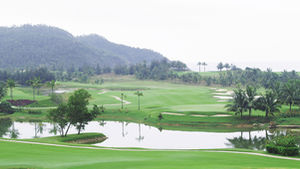A while back I discussed the difficulties for a researcher in trying to do a field based observational study on a topic that could quickly become controversial: assaults on police officers. One of the best things about these blogs is that they receive lots of really great comments and ideas. One such idea came from a LinkedIn poster, Alan Babineau, who provided a suggestion that was not only useful for the proposed assault study but also gave me the key to cracking another difficult methodological problem.
Let me give you some rough details about the second study. Imagine having to come up with a research design that would capture the before and after effects on local crime and disorder of a new safe injection site (what we call a pre-test/post-test study). As long as you get your boundaries right, and ensure that all reports are filled in correctly, local crime rates – relatively speaking - should not be too big of a problem to track (emphasis on ‘relatively speaking’). But how to track disorder?
In a systematic review of disorder in the criminology literature, Wes Skogan (2015) identified over 100 different forms of social and physical disorder, many of which would be applicable to our study. How can we possibly extract all of that from occurrence reports? I suppose we could, as other studies have done, periodically send some poor, long-suffering, graduate students out to the field to go and perform counts on things like used condoms and discarded needles. We could also ask area businesses and residents for their perceptions as to whether various forms of disorder have increased, decreased or stayed the same. We could ask the clientele of the SIS if their behaviours around, say, needle disposal have changed. And these are all great ideas, but they each only capture a partial slice of the general activity we’re interested in. How to get more?
And this is where Alan’s idea comes in. My initial solution to the SIS problem was to identify those police officers who were interested in research, and who would ordinarily be assigned to respond to calls in my target area. I would then ask them onto the research team as actual field-based researchers. As researchers, their task would be to serve as observers and recorders of various forms of activity that might not otherwise be captured in official records. We could have them take field notes, I thought. And then I remembered Alan’s clever suggestion:

While written notes are great for researchers because they can be easy to quickly code, let’s face it: what police officer is going to voluntarily sign up to fill out another report, no matter how keen they are about research? "I would love to do more paperwork!", said no cop ever. Further, it’s easy for me to code my own field notes, because I understand the shorthand I use in the field. My advice to anyone trying to interpret what I’ve jotted down, would be “don’t try this at home, kids.” So, why would police officer's field notes be significantly different from my mess?
Also, when you think about it, the narrative form of the V-log approach would allow me, as the research team lead, to be able to view their work and give immediate feedback and advice in a way that the field notes would not likely allow. And, very importantly, video content could be used for ‘photo elicitation’, an interviewing technique in which participants – in this case, the filming police officers - are asked to respond to images or other visual media. This would provide yet another means of capturing officers’ experiences of dealing with crime and disorder in the identified area. Further, video diaries could be used as a form of instruction for other officers about how to conduct field-based work. As for coding, there are plenty of techniques available for coding video content and, indeed, a whole field and there are always graduate students looking for new challenges (and an opportunity to avoid counting used condoms!).
In short, this is simply ingenious!
*cue the evil laugh …. Bwahaha hahaha haha!!*






